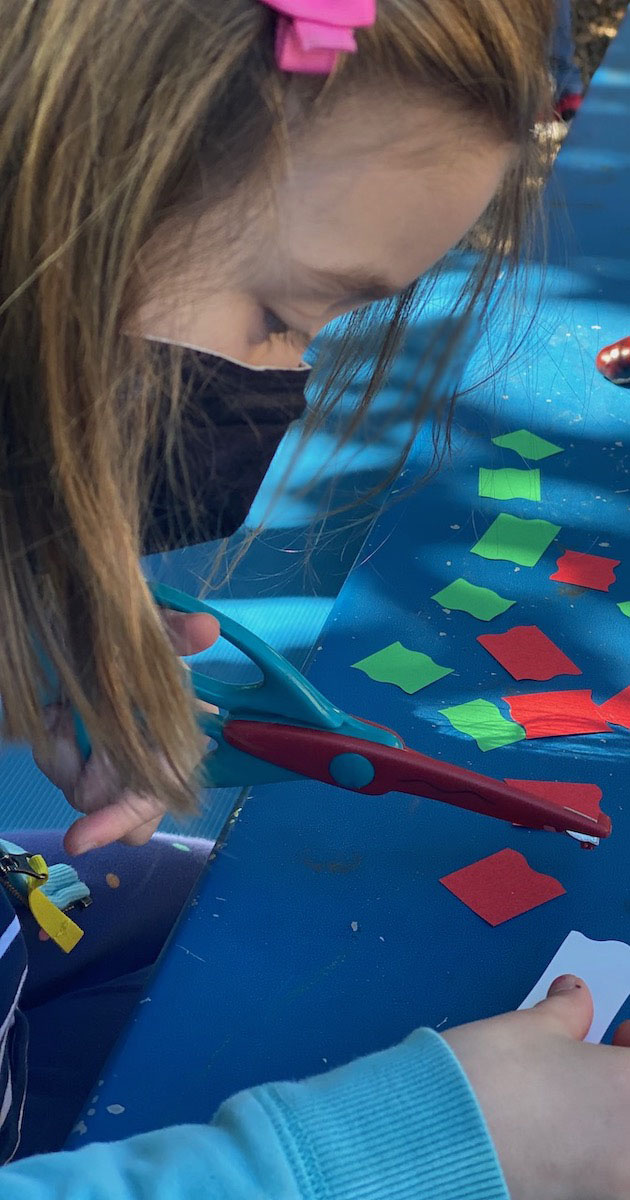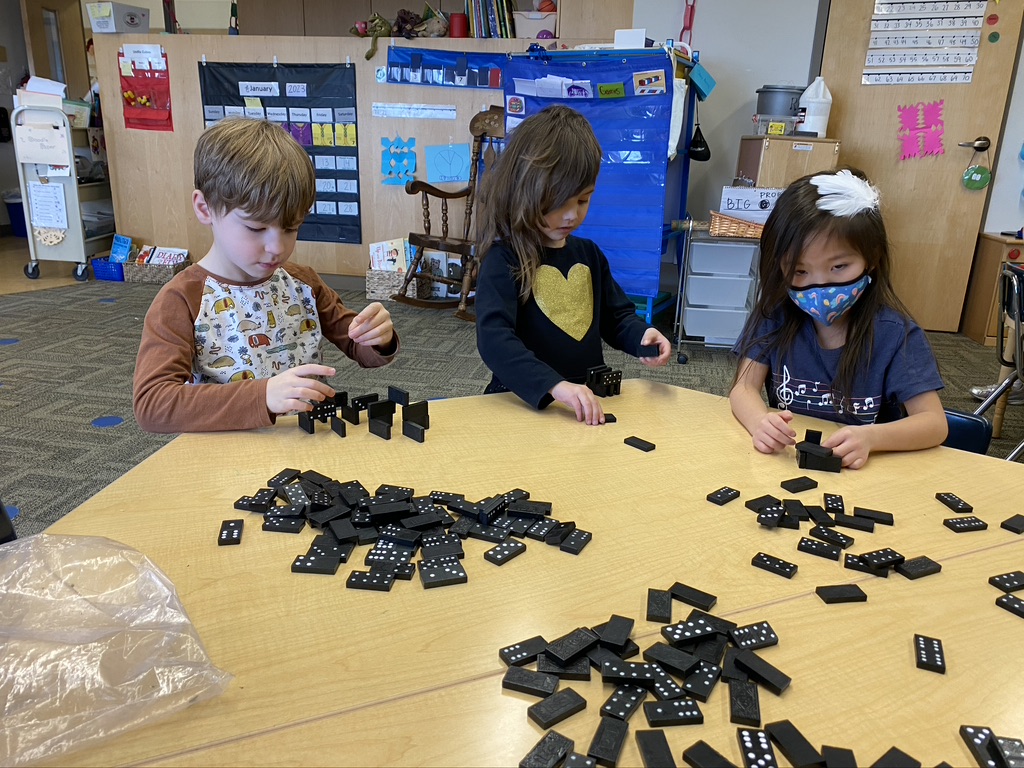Discover our
Home for Learning
- Contact
- 412-624-8020
- [email protected]


“Do you have any ideas?”
Teacher Tegan Ambrose offers a bag of chestnuts to the children from Room 25. Reaching into the sack, the Kindergarteners make their selections and sit at the table here on the terrace outside of Falk Lab School’s Kindergarten classrooms.
Uncapping a marker, one of the students begins drawing a smiling face on her chestnut.
Ambrose watches the Kindergarteners work, occasionally answering a question or commenting on what the students are doing:
“Glasses are a good idea. Could we make glasses out of any other materials? Could we make hats or feet for them?”
“What if we wrote their feelings on their faces?”
Mostly, though, she sits back and observes, occasionally writing in her notebook.
 The students are taking part in a class called Playlab, new at Falk this year. Along with Humanities courses like music, art, and yoga, Kindergarteners will have Playlab multiple times per week, varying between 40- and 80-minute blocks.
The students are taking part in a class called Playlab, new at Falk this year. Along with Humanities courses like music, art, and yoga, Kindergarteners will have Playlab multiple times per week, varying between 40- and 80-minute blocks.
“I’m trying to give students extended periods of open-ended, uninterrupted play,” says Ambrose.
“Ideally, I’d sit back and observe,” she says. “I like to offer them something they can play with fairly freely, then sit near a group that’s playing and document their process. Is there problem solving happening? How are they handling the materials?”
Ambrose, a former Kindergarten teacher at Falk, will document how children play, offering occasional “provocations” like the chestnuts and other materials, guiding students in keeping journals reflecting on their play, and interviewing them about the things they draw and write in their journals.
Playlab was created by Hatch alongside educators at Faison K–5, a Pittsburgh Public School, as an equity-focused initiative designed to help educators prioritize extended periods of play. It was first implemented at Faison, and this year Playlab is running there and at Arsenal PreK–5, as well as at Falk. Hatch provides educators in these schools with a flexible framework and a collection of practices including play stories and play journaling. Researchers from Pitt’s School of Education have been visiting all locations to observe. The project, along with associated professional development facilitated by Hatch, is funded by partners the Grable Foundation, Remake Learning, and The Pittsburgh Foundation.
Playlab is a natural fit for Falk Lab School, which has long recognized the importance of play in how children learn. There are currently plans to add a third-grade Playlab cohort next year.
“Play has the purpose of working things out, allowing children to test and experiment with their worlds,” says Falk director Jill Sarada. “Sometimes play recreates things they see in the world so they can understand them.”

Playlab fits what Sarada calls “curated play,” in which the teacher provides certain materials but children have a lot of voice in what they choose to do.
Ambrose’s provocations often take the form of combining unexpected materials, such as foam blocks and toothpicks. Or she may present a classful of Kindergarteners with strips of paper and challenge them to make something three-dimensional. Once they’ve completed one of these projects, she might ask them to add detail. Students often revisit a project across multiple days, finding new ways to add to and alter it.
“This is also curated play in that the teacher is reflecting on those experiences with children,” Sarada says.
A few weeks into the Playlab experience, Ambrose introduced journaling into the equation, asking students to draw what they did that day. For now, students are just drawing, but later they may label what they’ve drawn. Toward the end of the school year, Kindergarteners’ journals may include words or even full sentences describing and reflecting upon the play they’re capturing.
Sitting with each Kindergartener, Ambrose asks them to walk her through their drawing, taking notes on yellow post-it notes that she dates and affixes to the back of the page, occasionally asking questions like “How did you feel while you were playing?”
 “Revisiting play with children can deepen the learning,” says Sarada. “Sometimes making the learning explicit helps solidify it.”
“Revisiting play with children can deepen the learning,” says Sarada. “Sometimes making the learning explicit helps solidify it.”
